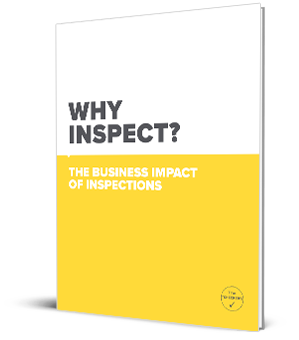A maintenance inspection is the evaluation of the condition of machinery or equipment. The goal of a maintenance inspection is to establish what resources are required to ensure the equipment is in proper working condition. Different types of maintenance inspections can be performed, including:
- Preventive maintenance inspections - Regular inspections are conducted to identify and address any problems before they cause equipment failures or breakdowns.
- Predictive maintenance inspections - These types of inspections utilize specialized technology, such as vibration sensors, infrared cameras, and downtime tracking software, to spot potential problems before machine breakdowns or malfunctions.
- Corrective maintenance inspections - After a problem or breakdown has occurred, these inspections are conducted to determine the source of the issue and take corrective measures.
- Condition-based maintenance inspections - These inspections are conducted based on the state of the equipment or machinery, as opposed to a predetermined schedule. The inspection frequency may vary based on the equipment's age and condition.
- Safety inspections - The purpose of these inspections is to detect and address any workplace safety concerns, such as electrical or mechanical problems that could potentially cause accidents or injuries.
How Maintenance Inspections Help Save Money
There are many benefits to conducting maintenance inspections. One of the biggest advantages involves cost savings. Here are ways that maintenance inspections can help save money:
Help reduce maintenance costs – Maintenance inspections draw your attention to issues that may escalate into bigger issues. During a maintenance inspection, you may discover signs of wear and tear that may lead to increased damage and the equipment breaking down. By performing maintenance in a timely manner, you can avoid a sudden breakdown that may mean completely replacing the equipment rather than repairing it.
Increased equipment life – Equipment will wear down over time, but it will deteriorate even faster if it’s unmaintained for too long. By assessing and maintaining equipment on a regular basis, you can extend its lifespan by recognizing and resolving any problems before they become significant and expensive to remedy. Regular maintenance inspections can also help identify recurring equipment issues and isolated issues, allowing you to make more informed decisions on maintenance schedules.
Increased equipment reliability - Maintenance inspections can aid in ensuring that equipment is running optimally, decreasing the likelihood of sudden breakdowns and malfunctions - which cause costly downtime and disruption to productivity. By conducting maintenance inspections, you may come to identify operational issues that need to be addressed and corrected – such as the misuse of the machinery that may be shortening the equipment’s lifespan.
Increased safety – Through maintenance inspections, you can identify potential safety hazards – allowing you to address the issues before they cause accidents, injuries, and worse. Requiring regular maintenance inspections also increases personnel’s awareness, which increases their sense of accountability in using the equipment properly and safely.











